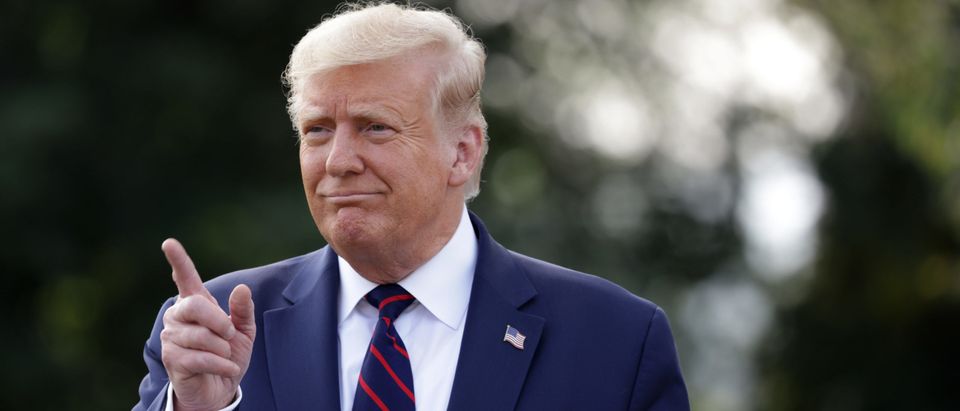Political prognosticators have all but handed the 2020 presidential election to Joe Biden. Donald Trump, they say, has maybe a one-in-four chance to win. But, as in 2016, these diviners of America’s political future speak with more self-proclaimed authority than evidence. Here’s why those prognosticators may be proven wrong yet again on November 3.
Consider how Donald Trump won in 2016. Although Trump lost the popular vote — entirely due to Hillary Clinton’s huge margin of victory in California — he won 306 Electoral College votes and, with that, the election. That outcome was made possible by Trump winning states Republican presidential candidates had not won in decades, including Michigan, Pennsylvania and Wisconsin.
Trump won despite losing 92 percent of the black vote, 73 percent of the Asian vote and 72 percent of the Hispanic vote. He won despite losing 54 percent of the vote among white, college-educated voters.
So, how did Trump win? He won because he captured 69 percent of the white, non-college educated vote plus enough votes from other demographic groups to eke out a win.
Vote shares of various voter blocks get you only so far. Turnout rates are equally important.
That is, who voted and who didn’t? Who will vote, and who won’t?
Clinton received a slightly smaller share of the black vote in 2016 than President Obama did in 2012 but, more importantly, black turnout fell to 57 percent in 2016 from 63 percent in 2012. If black turnout in 2016 had remained at 2012 levels, Clinton may well have (all else equal) won the election.
Now consider 2020. According to a report published last month by Amy Walter of the The Cook Report, “Trump is trailing, not because he’s losing his 2016 base, but because he has never expanded beyond it.” She adds, “One bright spot for Trump is an increase in support from Latinos. He took 35 percent of the vote among Hispanics in July/August, a 7 point increase from his 2016 showing.”
To underscore Amy’s point, The Cook Report recently released a fascinating online, interactive tool that allows users to adjust vote shares and turnout rates for various racial groups. The Cook Report concludes: “… if 2016’s turnout and support rates were applied to 2020’s new demographic realities, Trump would narrowly lose Florida, Michigan, Pennsylvania and Wisconsin — more than enough to swing the presidency to Joe Biden.”
This is where Cook’s analysts should have referred to a report they wrote earlier this year, titled “Who Didn’t Vote in 2016? Where Each Party Might Have Upside in 2020.” Two conclusions jump out from that excellent report:
- “Democrats might be encouraged that 32.9 million eligible non-white citizens, disproportionately Latinos, didn’t vote in 2016 and could boost the Democratic nominee’s vote shares if they’re activated. But these non-voters were disproportionately concentrated in states that weren’t that close, such as California (6.5 million), Texas (4.3 million) and New York (2.4 million).”
- “In 2016, non-college white voters [remember, these are overwhelmingly Trump voters] made up 50 percent of the electorate in Michigan, 49 percent in Pennsylvania and 63 percent in Wisconsin. But among non-voters, whites without college degrees were 60 percent in Michigan, 64 percent in Pennsylvania and 64 percent in Wisconsin.” (emphasis added)
Addressing point #1, Amy Walter herself (see above) wrote Trump has made significant inroads among Hispanics. Yes, a higher turnout among Hispanics will generally erode President Trump’s popular national vote margin, but those votes are mostly clustered in Democrat-inclined states and would have little impact on the Electoral College results.
Pundits denigrate President Trump for focusing his reelection efforts on motivating his base but, to the extent he motivates his base to vote — especially in battleground states — he enhances his odds of winning on November 3. According to Cook’s model, for example, boosting the turnout of white, non-college educated voters to 60 percent in 2020 from 55 percent in 2016, would (all else equal) result in a Trump victory with 306 Electoral College votes.
Who will win on November 3? That ultimately depends on who shows up to vote. But, despite what you hear from political prognosticators, the 2020 presidential election could be Donald Trump’s to win.
As Abraham Lincoln once said, “Elections belong to the people. It’s their decision. If they decide to turn their back on the fire and burn their behinds, then they will just have to sit on their blisters.”
James Carter served as the head of tax policy implementation on President Trump’s transition team. Previously, he was a deputy assistant secretary of the Treasury and deputy undersecretary of labor under President George W. Bush.


